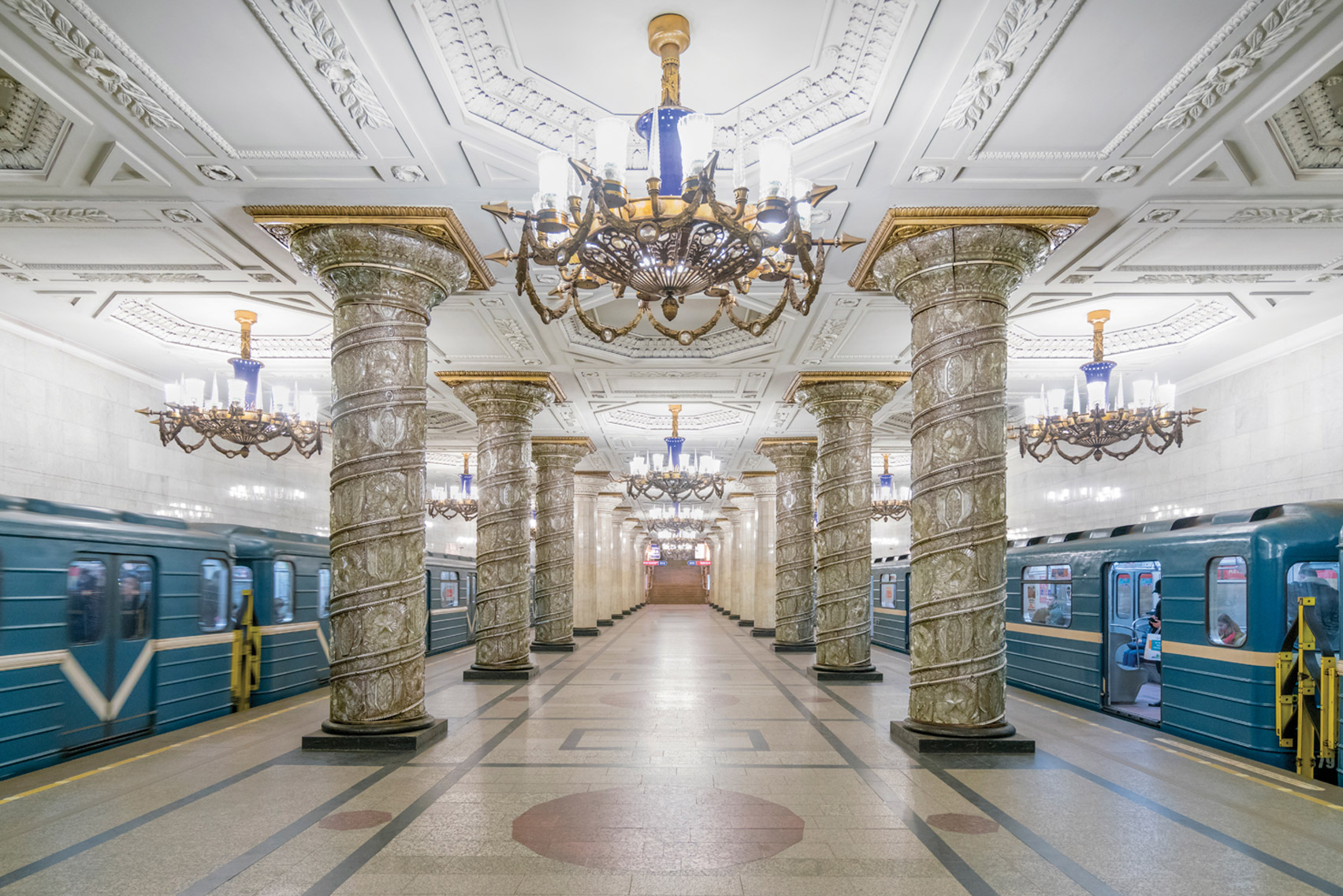
The Soviet Metro Stations photography series by Christopher Herwig documents the most unusual details of the Soviet-era metro network built between the 1930s and 1980s.

Intended to give an insight into the "closest realisation of a Soviet utopia", the photography collection features stations in 15 cities across seven different countries in the former USSR – the communist state that existed from 1922 to 1991.
Herwig's photos focus predominantly on the details that make each of these stations unique, which range from propaganda sculptures and artwork to elaborate mosaics and opulent lighting.

"I was first blown away by the metro's station on trips to Moscow, St Petersburg and Tashkent starting in the late 90s," Herwig told Dezeen.
"They are pretty amazing – for me it became an event in itself to visit the stations and explore them, just like one would go to a museum or forest. I spent months."

The photos are featured in Herwig's latest book Soviet Metro Stations, which has been published by FUEL. It is complete with an introductory text by Dezeen columnist and critic Owen Hatherly.
It follows his first book Soviet Bus Stops, which documented bus stops in Russia, Georgia and Ukraine.

Herwig's photography gives an insight into the array of political influences and architectural styles seen during the Soviet era.
This includes stations with a stripped-back Constructivist aesthetic through to excessively complicated Byzantine designs and elaborate Stalinist styles undertaken under Joseph Stalin's rule.

All the photos were taken early in the morning and late at night to limit the number of people in each shot.
While providing the images with an eerily quiet feel, this is intended to help retain focus on the architecture each station.

"I picked the ones that would tell a more complete story of the metros. I visited all the ones designed and for the most part built during the Soviet Union – the Dnipro stations were only completed a couple years after the fall of the USSR," Herwig explained.
"For me the true strength of the stations lie in the fact that often each one was unique not only in its overall appearance but right down to the type on the signs and lights on the ceiling and tiles on the walls."

Herwig's focus for the series had initially been the "over the top, palatial metros in Moscow and St.Petersburg" of Stalin's rule that are dominated by classical columns and marble, as they stray so far from the stations with which people are familiar today.
However, throughout his study of the structures he came to be more interested in the minimal, modernist structures of the Constructivist era that were built "with much humbler budgets" in the years following Stalin.
"While the classical stations seemed to look to copy the imperial past, their counterparts to me seem to dream more of a hopeful future and strive to create something never seen before," said Herwig.
Other photography series that document Soviet-era architecture include Jan Kempenaers black and white photos of war memorials and Italian photographers Roberto Conte and Stefano Perego's series in Georgia.
The post Christopher Herwig photographs opulent details of Soviet-era metro stations appeared first on Dezeen.
https://ift.tt/2JtDRrx
twitter.com/3novicesindia
No comments:
Post a Comment